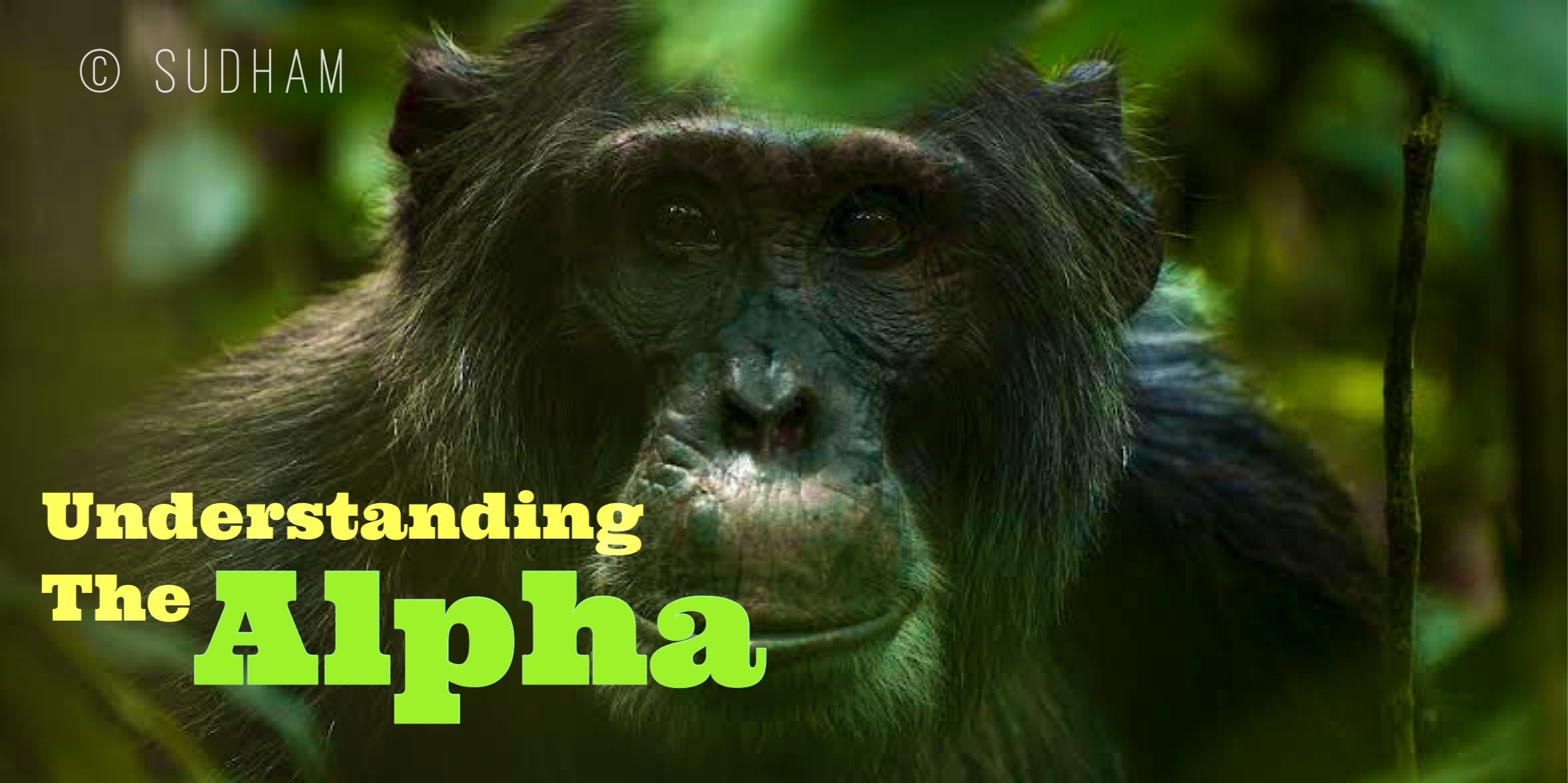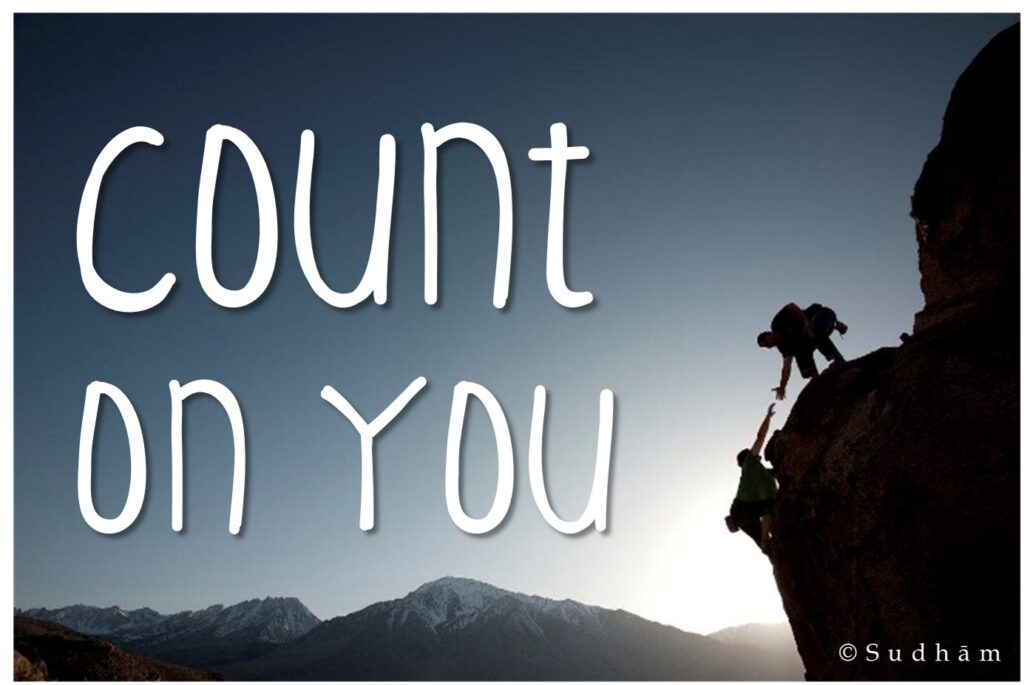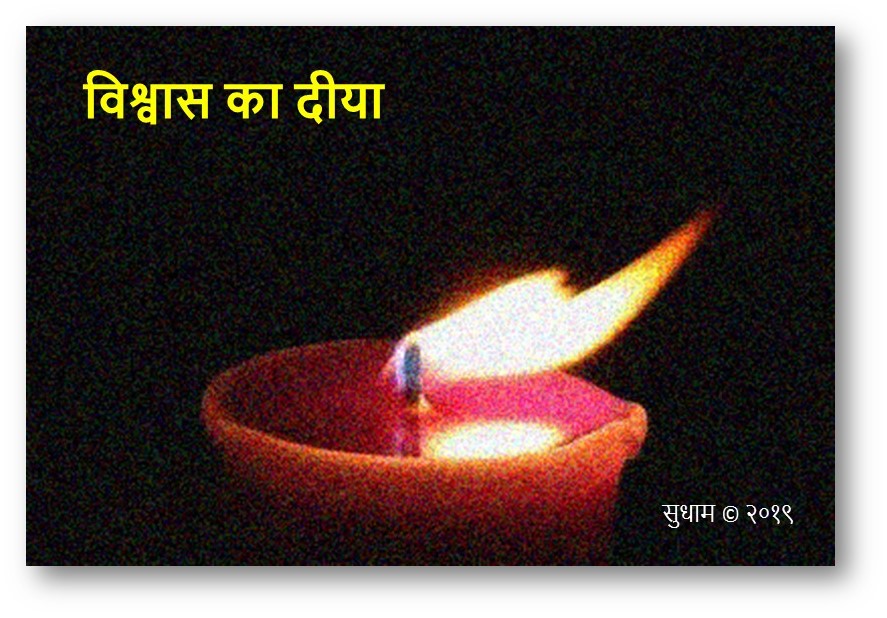Understanding the Alpha

CHANGE IS THE ONLY CONSTANT; so the adage goes. However, is EVERYTHING MUST CHANGE necessarily the sequitur? Is it always the case with ALPHAs or is that just a convenient stereotype?
I was watching a wildlife documentary recently and the parallels between corporate and jungle were drawing themselves out. I also remembered reading an article that mentioned that alphas make up to 70% of all senior executives.
While the concept largely drawn from primates and wolf packs, is based on the behaviour of the males of the species, we shall, for the purpose of this post remain gender agnostic.
Given the statistic quoted above, I have seen several people who would fit the ALPHA bill in my two decade plus experience. Some have been bosses, some peers and yet others subordinate as far as the hierarchical structure is concerned. Continuing the inherent sexual overtone to ALPHA behaviour, my observations are as much based on the dominatrices as they are on the dominators.
There fundamentally are two types of ALPHAs
Category A – The Bully
The minority that drives the stereotype. This category of ALPHAs is more about the self and hence the traits that they manifest are not necessarily all positive.
The belief system of The Bully is founded on the thoughts below:
- Power Demands (brazen) Display
Demonstrated power is a cornerstone for the bully. It can range from bravado to violence. The bully revels in a blood-bath and often relies on upheaval to signal change.
- Zero Sum Game
If there’s a winner there HAS to be a loser. It is not sufficient for the bully to succeed. The bully often relies on painting someone or something as the loser. The bully needs (sometimes shall create) the binary for credibility.
- Spoils Only to the Victors
The binary is extended to apportioning of the resources. The Bully shares the rewards with a select few creating a visible divide between the haves and the have nots.
- Citadels Are Built on Ruins
This is an unfortunate hallmark of The Bully. They believe that for the new order to come into existence the old order has to be erased. The Bully invariably dismantles the old without thought or consideration.
- Coteries and Sycophants
What usually starts-off with attraction to personal charisma of the ALPHA is gradually replaced by privileges. The loyalty of course, is continuously diminishing. Since a coterie of sycophants is encouraged over counsel, it invariably leads to the downfall of The Bully.
Category B – The Genuine Leader
Fortunately, the majority. They are the ones who manifest the positive aspects. They are confident and usually in control – both of the situation and their self. They win the trust of the tribe by solving problems. They are judicious in their use of consensus building and taking unilateral decisions.
The ethos of Leaders revolves around:
- Exemplary Courage
The Genuine Leader has a positive attitude with a bias for action. They would rather fail trying than not attempting. They are impatient but only with inaction. Success and failure, therefore, are mere outcomes.
- Handling Change
The Leader is driven by a vision. Able to deal with ambiguity, a good leader builds a bridge over the troubled waters by breaking it down into simpler steps for the tribe. Change if external, is not feared. If internal, has purpose.
- Equitable
A genuine leader is able to rise above personal likes or dislikes. They have a utilitarian view of their team and therefore is able to task and reward without playing favourites.
- Trust Built Authentically
The Leader delivers on his commitments. Failures if, where, and when are addressed instead of passing blame, being brushed aside or given justifications for.
- Line of Succession
Leaders plan. They can visualize a world without themselves in it. Succession, for the genuine leaders is not as much about continuity of stake as it is about sustaining growth. A good leader is unafraid of naming a successor.
From an anthropological perspective, whether it is corporate life or life in general, it is important to understand the ALPHA.
So, which kind of ALPHA do you see when you look around in your organization?
Or
Are you the ALPHA that others are seeing? If so, which kind?
Count on You

You know you cannot do it all In a journey of a million steps There's ample scope for one To stumble and fall What good is pride When you're running scared Looking for a place to hide Why wait till you're on your knees Unable to grovel or crawl A helping hand takes nothing away When you're in your element walking tall Between friends there's no place for shame So whenever you're in trouble Just call out my name Because when dark clouds gather And the sun isn't shining through To tide me through my worst times I know that I can always count on you
विश्वास का दीया

खुली हवा है वो आज़ादी की शीतल करे जो जब मध्धम चले एक ओर जो हो हावी तो बने आँधी कैसे तूफ़ानों में कोई दीया जले अलगाव की चिंगारी कहीं दामन ना लगे मिल के बढ़ने के लिए दिल भी बड़े रखने होंगे दूर अभी हैं वो मंज़िलें जहाँ ख़ुशहाली मिले कटे तने से चलने से कैसे ये रास्ते तय होंगे इरादे नेक वही जो अमल में आएँ कथनी और करनी को अब मिलाना है तेरे मेरे के ये फ़ासले चलो मिल मिटाएँ विश्वास लेना देना नहीं कमाना है
Hope of Deliverance: The Silver Lining in the Flipkart Fiasco
The thing with icons and heroes who are put on a pedestal is the inevitability of a fall. Regardless of whether it’s inflicted by fate or brought upon by one’s own deeds it is bound to hurt bad.
There have been Gigabytes of rants in the sociosphere describing how unpleasant the experience was and how suddenly this much loved, revered, more importantly relied upon shopping portal had metamorphosed into a “con” job. Flopkart, Foolkart the brand was getting shot down thick and fast.
Pun apart, the flip side to the story is the fact that over a million (1.5 as per Flipkart’s apology mail) of netizens descended on the site to get their hands on something or anything. Even for a nation that sinks its teeth into the “Yours for Rupee One” formula time and time again the sheer magnitude was a surprise.
The question is if at all any blame needs to be laid on their door? Haven’t there been times when we have turned back from a favourite joint just because it was too crowded or been served bad food or experienced atrocious service? Let’s face it s&^t happens!
I am not passing judgement on Flipkart’s innocence here. No one disputes the fact that the portal could have been better prepared. Last I checked, getting a deal is not anyone’s right. Neither is a communication indicating potential discounts/deals a contract. The point I am trying to make is how can greed be good for one (a customer desirous of a discount) and not the other (a seller aggressively pushing his wares).
Be that as it may, the Flipkart incident is a sign of times and those to come. It’s an emphatic confirmation of the hockey stick trajectory that e-commerce in India is on. A justification perhaps for the billions of dollars of investor faith.
Eighteen: The End of Innocence The top shopping portals are battling it out this festival season in a war reminiscent of the cola wars or the detergent wars. The media houses are raking in the chips. The newspapers are full of gate-folds double spreads, jackets whatever kind of innovation they can offer. Do not have the numbers but would stick my neck out for online guys to have the highest share of voice as compared to any other category.
The white good brands that typically used to surface at this time of the year are seeing their thunder being stolen. It’s a double edged sword for them. On one side the online channel is boosting revenues. On the other, they are holding their breath fearing how the online deals and prices are going to impact their market operating prices, praying it does not give rise to conflict.
While people click and shop away this festive season the online shopping dhamaka’s have given a new hope to all the brands that they host. After two or three failed seasons of the promised festival spike there’s hope of deliverance!
In the Line Of Fire: Dealing with Adversity
 They say that adversity is the true test of character. It is a fact that everyone be it individuals, communities, countries, teams, businesses at some point or the other shall face times that are tough. We as marketers have always looked for examples in war, sports, celluloid, politics, simply put life for understanding and propounding theories with regard to brands and their behaviour.
They say that adversity is the true test of character. It is a fact that everyone be it individuals, communities, countries, teams, businesses at some point or the other shall face times that are tough. We as marketers have always looked for examples in war, sports, celluloid, politics, simply put life for understanding and propounding theories with regard to brands and their behaviour.In the tough times do emerge interesting characters who deal (or don’t deal) with adversity in their own unique way and more often than not brands that we use, buy and deal with fall into one of these. For the purpose of this post I have chosen to label these characters and shall explain the traits of each citing examples from politics, sport, film etc. as applicable.
 The Crusaders: These are people/brands that believe and live for a larger cause and continue to do so even in the times of adversity. Regardless of the tide being in their favour or against the cause remains front and centre to everything including their response. The focus on the larger good often may even come at a high price but are well worth the sacrifice. There are two examples that instantly strike my mind one from the world of business, the other from politics. In both these cases there was a higher price to pay and the brands/people in question did pay.
The Crusaders: These are people/brands that believe and live for a larger cause and continue to do so even in the times of adversity. Regardless of the tide being in their favour or against the cause remains front and centre to everything including their response. The focus on the larger good often may even come at a high price but are well worth the sacrifice. There are two examples that instantly strike my mind one from the world of business, the other from politics. In both these cases there was a higher price to pay and the brands/people in question did pay.
Case 1: Nokia Battery Recall
An isolated incident of a battery exploding became a PR nightmare for brand Nokia, rumour mills working overtime did not help the cause either. The brands response however did not go through the traditional cycle (at least to the outside world) of denial, acceptance, risk assessment and corrective action. The brand behaved in an extremely responsible manner. The risk, probability and reasons were explained to the consumer, a robust mechanism was first put into place and the brand then recalled the batteries in question. Not only did the brand gain consumer confidence it shot up to the #1 position in the Most Trusted Brands survey in the same year!
Case 2: AAP
The jury is still out on this one. The Aam Aadmi Party almost swept the Delhi assembly polls nudging out a formidable Bhartiya Janata Party to form the government in Delhi. The party under severe pressure to deliver on its tall promises in its blink and you miss stint resigned from power on their rai·son d’être; their version of the Jan Lokpal Bill.
 The Fighters: The label is self-explanatory. These are brands or individuals that bring about changes in themselves, work-out hard and train to come back better and stronger. They are extremely competitive in their fabric and hate losing to anyone or anything. They always believe that their best shot is the next one. What shouldn’t be undermined here is the emotion is complemented in full measure by blood, sweat and toil. Here are examples of 3 individuals to build my argument.
The Fighters: The label is self-explanatory. These are brands or individuals that bring about changes in themselves, work-out hard and train to come back better and stronger. They are extremely competitive in their fabric and hate losing to anyone or anything. They always believe that their best shot is the next one. What shouldn’t be undermined here is the emotion is complemented in full measure by blood, sweat and toil. Here are examples of 3 individuals to build my argument.
Case 1: Rocky Balboa
Yes its clichéd and has been over-used but the success of the Rocky franchise over twenty years, if nothing else has taught us one lesson; a fall, a failure, a defeat is not the end, it is the beginning of your climb back to the top. We love it when our heroes have their backs against the wall. We love it when they scratch for every inch and fight with every ounce of strength in their bodies. Somewhere perhaps we all identify with failure and success has always been aspirational. Here is a brand that ruled got written off, yet came out a winner!
Case 2: Yuvraj Singh
It purely is a question of individual assessment, but then blogs are just that aren’t they? Here is a guy who was perhaps at the peak of his prowess. The quintessential watch out for this guy from the start he delivered big time and was the hero of India’s 2011 ICC World Cup triumph. Then followed the fight with cancer and his amazing return to health and fitness in the span of a year. His performance have been debated and arguably have been patchy and nowhere near his best. As much as we love making heroes we seem to love pulling them down even more. Yuvraj as I write this piece has his back to the ropes and carries the burden of India’s loss in the ICC World Cup T20 finals. A 100 bucks say that the story ain’t over.
Case 3: Steve Jobs
This I use as an example from the world of business. A man who was kicked out from the very company he founded. Did his time and came back with a bang! The brand Steve Jobs was as much about not giving up as it was about innovation. Whether in life dealing with his ill-health or in business the approach and resolve remained consistent.
All the of the above had perseverance and preparation in common apart from a come-back.
 The Rabble-rousers: These are the wise guys the smart Alec’s or the sly foxes of the world. Their method of dealing with trouble is to create diversions or smoke-screens. They are also the brands/people that pick, point to and amplify flaws in their competition when themselves in trouble. Yes as much as we would like to disbelieve the Dirty Tricks Department does exist and the if I am bad he’s badder game has been played in sports, politics and business alike. To avoid controversy I will not cite examples or names but would point out to a two political outfits in a prosperous western state of India. They are by no means the only examples of fighting adversity with diversion.
The Rabble-rousers: These are the wise guys the smart Alec’s or the sly foxes of the world. Their method of dealing with trouble is to create diversions or smoke-screens. They are also the brands/people that pick, point to and amplify flaws in their competition when themselves in trouble. Yes as much as we would like to disbelieve the Dirty Tricks Department does exist and the if I am bad he’s badder game has been played in sports, politics and business alike. To avoid controversy I will not cite examples or names but would point out to a two political outfits in a prosperous western state of India. They are by no means the only examples of fighting adversity with diversion.
 The Faders: These are the kind that never stood up and fought. For reasons best known to them they never responded to the situation or put up a fight. They laid down their weapons and turned their backs to the situation.
The Faders: These are the kind that never stood up and fought. For reasons best known to them they never responded to the situation or put up a fight. They laid down their weapons and turned their backs to the situation.
Case: Dr. Manmohan Singh
Hailed as the father of India’s liberalization and economic surge the Prime Minister of India has been under the pump for close to two years and there seems to be no end in sight. The media and opposition alike have accused him of everything including being weak, inactive, indecisive etc. For a brand that he once was his “history will judge me kindly” press conference was a sad sight to watch.
 The Deservers: These are the brands/people that deserved what they got. They eroded and abused one of the core components of a brand Trust. Their vehement denial of any wrongdoing and desire to retain the high pedestal dragged them into infamy, deservedly so.
The Deservers: These are the brands/people that deserved what they got. They eroded and abused one of the core components of a brand Trust. Their vehement denial of any wrongdoing and desire to retain the high pedestal dragged them into infamy, deservedly so.
Case 1: Lance Armstrong
Individuals and businesses alike would have taken inspiration from Lance Armstrong. However, the web of deceit that he spun left a bitter taste in the mouths of everyone who believed his incredible tale of will over all else! The collateral damage was the loss of reputation for the Lance Armstrong Foundation that did genuine good work for and on behalf of cancer patients. Today it exists under the name of LiveStrong and a stigma.
Are these characters exhaustive, are there more? The author believes that the characters though not exhaustive are definitive of what one gets to see.
To close I would like to draw attention to an article titled “The Inevitability of Fires” by Shekhar Swamy of RK Swamy BBDO fame in the book Brands Under Fire.
In his article Swamy talks about how crises are inevitable and on the importance of TRUST and TRUST Balance, relevant excerpts as below.
It is a truism that any crisis can confront any brand or company at any time. It’s not a question of whether any crisis will occur in a brand’s life. It is only a question of when.
At the core of all successful brands lies that big T word-TRUST. When that trust is violated, the reaction is one of hurt and suspicion that can easily turn to anger and rejection.
The only way to be ready for any crisis is to continuously build and hold a vast credit balance of TRUST vis-à-vis the consumer. Indeed this is true in any relationship. As long as there is a credit balance, one can draw on this in times of crisis.
The Crusaders and Fighters make credits on account of their actions into their TRUST Balance, the Rabble-Rouser perhaps manages to get away with neither a credit nor a debit, the Faders loose credit significantly and the Deservers are the ones who go bankrupt!
Building Brands Brick by Brick…Literally!
 I was tuned into one of the local FM stations in Delhi as I was driving this morning and I encountered a virtual traffic jam. I changed at least three FM stations trying to catch a song and ran into the radio spots of popular developers in the Delhi NCR. Which is what set me thinking.
I was tuned into one of the local FM stations in Delhi as I was driving this morning and I encountered a virtual traffic jam. I changed at least three FM stations trying to catch a song and ran into the radio spots of popular developers in the Delhi NCR. Which is what set me thinking.We (at least those of us living in the top eight metros) are surrounded today by communication/messages from Real Estate as an industry. Be it television, print, radio, digital or outdoor they are everywhere. According to a recent report 22% of the AdEx comes the real estate industry Given that the you and me of the world are their TG and we seem to be getting exposed to all this communication someone somewhere must be doing their job right. Or is it?
What really is getting communicated to me is that there are lots of choices if I really were to buy property in and around Delhi. The choices indeed span taste and size of pocket. Which at most basis the textbook stages of building brand equity would fall in the awareness category. Push comes to shove, one might even be able to mention the names of a few builders (some brand managers would feel happy ticking of their ToM targets) hence there is some amount of brand recognition that the communication is delivering. Now comes the tricky part. The part that deals with creating a preference for the brand and then extending it into loyalty. Textbook!
Luxury The question in my mind though is whether this cookie-cutter approach works for brands in the real estate space? What really goes into building a brand in the real estate space? What role does the brand have to play in the process/decision of purchase?
For the sake of this discussion we shall look at those who set out to buy with the intention of inhabiting it or at best are looking for a secure investment. For the middle class, buying a house is not a simple decision. Unlike most other purchase decisions brands are not competing with other brands. They are competing with the process of purchase itself. If we were to take a look at what is competition for the brands whilst vying for consumer attention, the list would be long and for anyone who has gone through it, tiring. Starting from the point of realization i.e. “Yes! I/we need to buy a house” through the journey of information seeking, comparison, evaluation etc. the brand of the product which in this case is the house comes in very late into the equation. After going through the usual Where, What, When, How Big, How Much, What else do I get rigmarole the brand often is incidental.
So is there no point building brands in real estate? No, that is neither the import nor the message. The point is brand managers and agencies involved do not seem to be creating communication that is built on a complete understanding of the role of the brand. Most communication is dimensioned on price or the location or the amenities provided etc.
[youtube=http://www.youtube.com/watch?v=P3dzbW35_cM]
Brands in the real estate are in my opinion, built on one of the fundamental gauges of brand strength, trust. Here is a category where the past performance and future promise hold equal importance. The future is aspiration while the past is assurance. Every project that is completed is living testimony to how the brand fared on its time, cost and quality commitments. Every brick that gets laid is literally building the brand. Some of the better brands do talk about this but it usually is a passing mention and easy to miss.
For a sector that is the 2nd highest spender on media/advertising there was not a single real estate brand in the Top 100 of the Brand Equity Most Trusted Brands in India. In fact basis another report the first real estate brand appears at 516 in a list of Top 1200 brands! Of the ones that do appear, not all are into housing.
It is in building and communicating trust that real estate brands need to invest. Basis evidence they sure have a long way to go. Or should I say several floors to the top!









